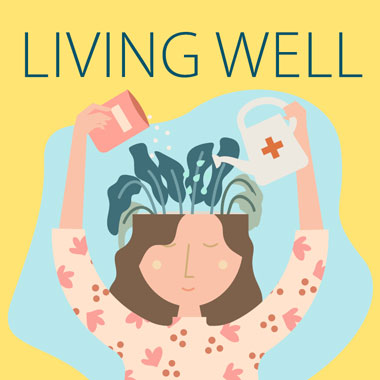Interview with Veterinary Nursing Lecturer, Gemma MacAlister

Why did you want to become a lecturer?
I always knew from being a small child that I wanted to be a veterinary nurse! I started work experience at my local practice as a young teenager and qualified as an Registered Veterinary Nurse (RVN) in 2003. I enrolled on the RCVS Diploma in Advanced Veterinary Nursing soon after this. My aim was to specialise in medical nursing and I envisaged my career would focus on obtaining a role in a referral centre.
During my time in practice I was asked if I wanted to train as an A1 assessor to support the students in their training. I found myself really enjoying this role which made me reconsider my long term career plans. I decided that I wanted to pursue a career in training future veterinary nurses. I wanted to share my love of veterinary nursing and hopefully inspire others!
How did you get into lecturing?
Once I decided that lecturing was what I wanted to do, I started researching all course providers to see what qualifications their academic staff held. I soon found out that a Certificate in Education was needed (Cert Ed.) but that regular teaching hours were needed to obtain this qualification. During my research I noticed that a new introductory teaching qualification was being offered at night class at my local college called Preparing to Teach in the Lifelong Learning Sector (PTLLS). I decided to enrol on this while still working full time in practice and also studying for my advanced diploma!
I found the course really helpful, and it also assisted my support of students in practice. During this time I was checking every training centres website looking for a vacancy to be advertised. A job was advertised as an Internal Verifier at The College of Animal Welfare in Leeds and although this wasn’t the lecturers position I was aiming for, I applied and was successful in obtaining the role.
During my first year in this role I achieved the V1 qualification and was presenting lectures for standardisation and A1 assessor training. During my appraisal I discussed the possibility of lecturing and stated that this was something I was interested in. This led to a small amount of teaching alongside my verifier role, which kept me very busy!
The College are very supportive of CPD, but stated that I would need to wait for a year before I could be put through the Cert Ed training as this normally takes place during working hours. I wanted to complete the Cert Ed as I thought this would help me in gaining a role as a full-time lecturer. I decided to complete this in my own time at night school over two years and was lucky as I received some government funding to help me with the costs of the course. It was hard work but I was eventually successful in becoming a full-time lecturer, a job that I love.
Any helpful advice for studying and applying for the role?
The PTLLS course really helped me decide that this was the career for me. I completed this at night school while I was working in practice, and I believe that this helped me secure my job with the College. I also acted as a British Veterinary Nursing Association (BVNA) area representative for a year, which helped demonstrate my skills set for organisation and talking in front of a crowd. I am not the most outgoing person, so found that this helped boost my confidence and developed my skills in public speaking.
During my time in practice I tried to complete a range of CPD and gather as much experience as possible. I spent time at Bristol University, an equine clinic and a medical referral centre. This was completed with support from my previous employers who were very helpful during my studies. Prospective lecturers should consider ‘seeing practice’ in college to see what the job entails, and I have had previous students come back to college to do this when considering a role in lecturing.
What programme do you currently teach on?
I currently teach on the Level 3 Diploma in Veterinary Nursing and also complete some short course lecturing. My subjects are varied with the main focus being anatomy and physiology, medical nursing, anaesthesia and ethics. I currently mark the SAVN 16 (315),18 (316) and 19 (313) assignments and exams.
As a full time lecturer we are expected to complete a minimum of 20 hours per week lecturing.
What would you describe as a typical day?
A lecturer’s contracted hours are 8.30am until 4.30pm Monday to Friday, however lecturing is a vocation, so I rarely work these hours! A typical day starts between 7.30-8am when I arrive at the office and check through emails. A lot of students study on an evening so a clear email inbox soon fills up overnight!
After replying to emails, I set up the classroom for teaching, gathering any practical equipment that is needed and making sure notes are in order. Students start arriving at 8.30am ready for classes to start at 9am.
Before going in to teach I always have a quick chat with the senior course tutor for any student updates, and to arrange any student support that is required throughout the day.
Teaching starts at 9am through to 10.30am when the students have a 15 minute break. During break I check and respond to emails, return missed calls and have a catch up with any students that require support.
Teaching starts again from 10.45-12.15 when it is lunch break. After the session ends at 12.15 I clear down the classroom, ready for the next teaching session and nip my dog out for a quick walk. I am lucky to be allowed to take Monty to work with me when needed for teaching and he is a great teaching assistant for demonstrations! The rest of lunch is taken up completing 1:1 tutorials with students, these take place on a regular basis to ensure students are progressing well and have no concerns about their studies.
I head back into the classroom at 1.15 and teach through until 2.45, another quick break for phone calls and then back in the classroom at 3pm until 4.30pm when the students finish.
After students have left, the classrooms are cleared down ready for the next day and then preparation starts for next teaching sessions. I live an hour away from the centre so I usually work until 5.30-6pm preparing lessons, reflecting on lesson plans, catching up on administration duties and then head home.
Once home, preparation continues on an evening as I read around subjects that I am teaching that week to ensure that my knowledge is up to date. Even if I have taught the subject several times, veterinary practice is an ever changing environment so I spend time reading journals, checking websites and forums to ensure that my knowledge is current.
I work hard during the week so that I have my weekends free. Some weeks have a lighter teaching load, and so I can prepare lessons during work time and mark any assignments that have been submitted. I try to plan lesson preparation at least a week in advance to ensure that I can prioritise my workload and time effectively.
What is the favourite thing about your job?
I enjoy being in the classroom and seeing students grasp a subject and relate it back to their practice environment. It is great seeing the ‘lightbulb’ moment when someone understands why they are performing a task a certain way in practice. It is also rewarding to see students progress through their course and develop their skills and confidence before finally qualifying as an RVN.
What is the least favourite thing about your job?
I really miss working with animals! We complete clinical updating throughout the year, so I spend time in veterinary practice on a regular basis, but I do miss the regular patient interaction.
The other aspect of the job that is challenging is when, despite everyone’s best efforts, a student is not successful in an area of the program. It may be that a student fails an exam, assignment or have personal problems that are impacting on study. I find it difficult as we support students as much as possible, but ultimately students have the responsibility for their study and revision in order to be successful.
Have you had any unusual experiences within the role?
When discussing topics in class, students often ask questions about cases they have seen. When discussing anatomy and physiology in relation to different species I was asked about a ‘mole worm’. The student couldn’t remember the name of the animal so was trying to describe it. I thought that they were pulling my leg, but in fact this is a real species – a Mexican Mole Lizard. I learn something new every day!
What are the benefits of being a lecturer?
I enjoy the interaction with students and the fact that every day is different. It’s a constant challenge to keep up with current veterinary nursing knowledge, teaching curriculum changes and teaching practice. I enjoy this aspect as I don’t ever feel as though I am stuck in a rut!
Is there anything you wish you had known before hand?
I do think that some people have the view that lecturing is a nine to five job with school holidays off. I didn’t realise how challenging the first year of teaching would be. My colleagues were very supportive and advised that the first year is demanding but after that things get easier. I found it hard to believe at the time, but it is true!
Any top tips for the role?
Buy a big diary! I try to keep at least a week ahead of my diary so ensure I have enough time to prepare lessons and complete administration duties. Being as organised as possible definitely helps reduce the stress that comes with some aspects of the role.
What are your career plans for your future?
I am happy in my role as a lecturer at the moment. Eventually I would like to complete a degree in further education but haven’t decided which area I would like to study at this time.
What opportunities are open to you once you become a lecturer?
There is the option of being a course tutor, responsible for monitoring student progression. There are further routes in management, blended learning, quality assurance and other educational fields.






